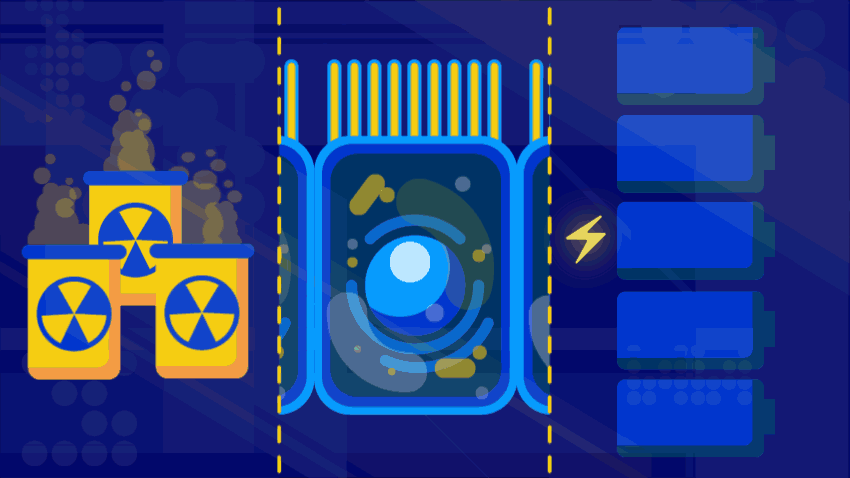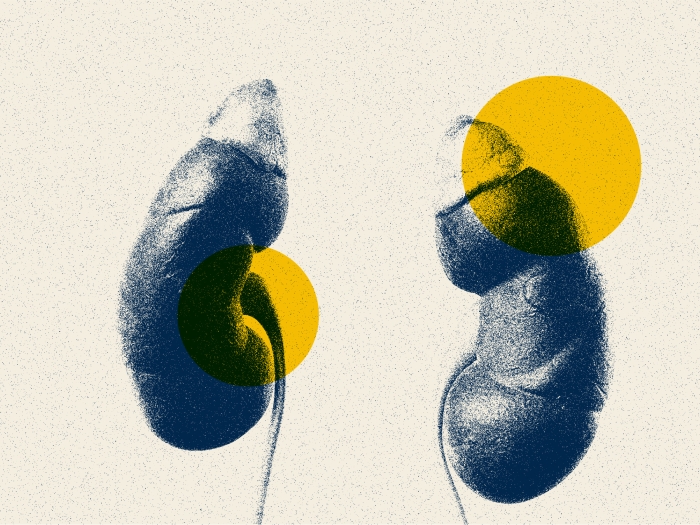Getting rid of the nose-holding component of a fart takes precedence within our guts.
10:30 AM
Author |

Onions, cabbage, garlic. While nutritious, eating these foods can lead to an embarrassing side effect: smelly flatulence. More than just smelly, hydrogen sulfide, the chemical compound responsible for the rotten-egg aroma, is deadly if inhaled at doses of more than 700 parts per million. (Thankfully, a bout of flatulence contains just .001 to 1 ppm sulfide.)
Hydrogen sulfide is a toxic gas that is a prominent hazard in many industrial occupations. It's also one of numerous byproducts of microbial chemical processes taking place in the human gut and must be detoxified. In another process, the trillions of bacteria that call our colon home make a helpful chemical called butyrate by fermenting insoluble fiber remnants from our diet, such as fiber from whole grains and vegetables. The cells lining the colon use butyrate for energy and reduce inflammation.
A team of Michigan Medicine researchers has determined how sulfide removal and butyrate utilization, which compete for the same cellular resources, could be held in balance inside the colon.
LISTEN UP: Add the new Michigan Medicine News Break to your Alexa-enabled device, or subscribe to our daily updates on iTunes, Google Play and Stitcher.
"Our colon cells are well suited to detoxifying hydrogen sulfide because they are exposed to higher concentrations of it than other tissues in the body," says Aaron Landry, Ph.D., a postdoctoral fellow in the lab of Ruma Banerjee, Ph.D. in the department of Biological Chemistry, and co-first author of a new paper in Cell Chemical Biology.
Establishing priorities?
Mitochondria, which are best known as the powerhouses of the cell, contain several enzymes that contribute to energy production. One such enzyme is SQR (short for sulfide quinone oxidoreductase), which performs the first and critical step in detoxifying hydrogen sulfide and clearing it from the body.
SQR oxidizes hydrogen sulfide by removing electrons from it and dumping them into coenzyme Q10 (CoQ10), a compound that's naturally present in the body. (Some people take CoQ10 as a dietary supplement, though studies are currently inconclusive as to whether it's effective at preventing or treating disease.) Meanwhile, our colon cells use butyrate, produced by bacteria, for energy production using an enzyme called ACADS (short-chain acyl-CoA dehydrogenase). Since ACADS also uses CoQ10 for dumping electrons, it gives rise to a dilemma, as there's only so much CoQ10 to go around.
How then does the cell prioritize clearing a poisonous gas over making energy?
MORE FROM THE LAB: Subscribe to our weekly newsletter
A clue came from another molecule in colon cells called coenzyme A, which is needed when butyrate is used for energy production. Landry and colleagues noted that for decades, ACADS was known to contain CoA with an extra sulfur bound to it, called CoA persulfide.
"The additional sulfur suggested that this ligand came from somewhere, but no one knew the source of it," says Landry.
When CoA persulfide is bound to ACADS, it essentially blocks its function, says Landry, preventing the utilization of butyrate. They showed that SQR can convert CoA and hydrogen sulfide to CoA persulfide, which would allow prioritization of poisonous hydrogen sulfide clearance over energy production by colon cells.
Says Landry, "Sulfide is a byproduct of digestion that our bodies have to continuously contend with. If you have a diet without enough fiber, it could potentially aggravate the effects of hydrogen sulfide or our ability to detoxify it."
The co-first authors Sojin Moon, Ph.D. in the Banerjee lab and Hanseong Kim, Ph.D. in the adjoining lab of Uhn-Soo Cho, Ph.D., figured out that the crystal structures of human SQR captured with various intermediates — substances made during a chemical reaction — providing snapshots of each step of the reaction, including the electron transfer to CoQ10. Collectively, these snapshots identified an unconventional mechanism for sulfide detoxification.
Paper cited: "A Catalytic Trisulfide in Human Sulfide Quinone Oxidoreductase Catalyzes Coenzyme A Persulfide Synthesis and Inhibits Butyrate Oxidation", Cell Chemical Biology. DOI: 10.1016/j.chembiol.2019.09.010

Explore a variety of healthcare news & stories by visiting the Health Lab home page for more articles.

Department of Communication at Michigan Medicine
Want top health & research news weekly? Sign up for Health Lab’s newsletters today!





